Reviews
Runcam Micro Swift 2 Review
Posted on September 5, 2017 • 7 min read • 1,424 words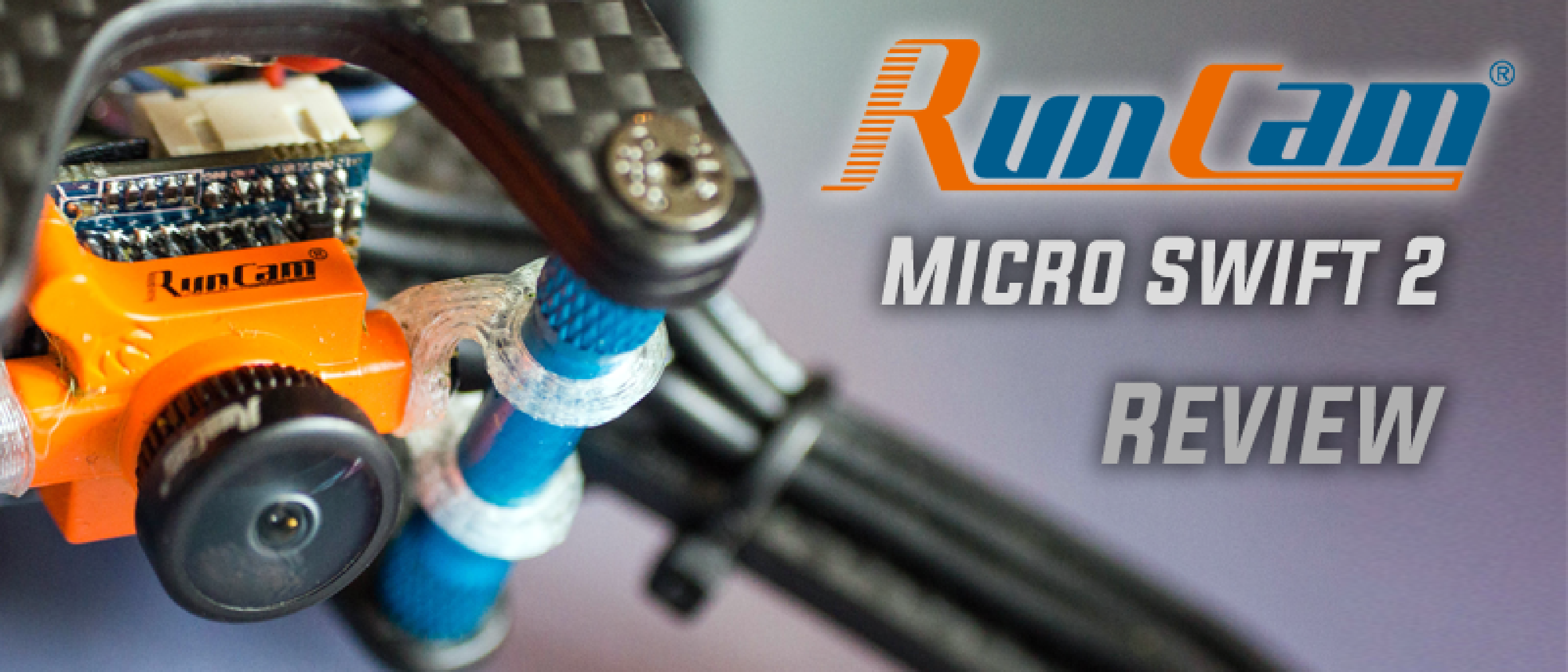
You can buy the Runcam Micro Swift V2 from Banggood or direct from Runcam, as well as any local retailer that stocks Runcam!
Introduction
There’s a lot of reviews out there already on this camera, but I always feel like there’s nothing better than testing it yourself to get the full information. Being sponsored by Runcam has it’s perks, as it means I get to hear about and potentially test new and upcoming products before they make it to the shelves. This was one of the products, and while I did get this for free and will probably biased to some degree, I’d like to think I maintain a neutral view and present all the facts without bias. I chose to accept Runcam’s sponsorship due to their fantastic products, innovation, and the fact they listen to the community; but if it is a bad product, I will call it out.
With that aside, let’s get onto the base product specs and get some unboxing on the go!
Product Specs
- Brand: RunCam
- Item name:Micro Swift 2
- Image Sensor:1/3" Super HAD II CCD
- Horizontal Resolution:600TVL
- Lens :2.1mm(M8)FOV160°/2.3mm FOV 145°
- Signal System:PAL / NTSC
- Picture scale: 4:3
- Integrated OSD:Yes
- One Key Scene:Personal / Lightrax / Outdoor / Indoor / Cloudy / Twilight
- S/N Ratio >60dB (AGC OFF)
- Electronic Shutter Speed : PAL: 1/50
100,000; NTSC: 1/60100,000 - Auto Gain Control (AGC) : Yes
- Min. Illumination:0.01Lux@1.2F
- WDR: D-WDR
- DNR: 2DNR
- Day/Night: Color/Auto/B&W
- Power: DC 5-36V
- Working Current: 12V@60mA / 5V@130mA
- Net Weight: 5.6g
- Volume: 19mm19mm19mm
Features:
- RunCam Micro Swift 2 added built-in OSD.
- One Touch Scene Setting (preset scenes 5) - Personal, Lightrax, Outdoor, Indoor, Cloudy, Twilight.
Unboxing
The packaging that you are all familiar with for Runcam cameras has changed pretty dramatically - due to the size changes they’ve also decided to make their packaging micro also :) This of course should make shipping way cheaper, and is less damaging to the environment - both wins in my book.
Package includes:
- 1 x RunCam Micro Swift 2
- 1 x Aluminum bracket
- 1 x Set of screws
- 1 x 6pin FPV sillcone cable
- 1 x 5D-OSD menu cable
- 1 x Manual

Inside we find all the usual accessories listed above that we have come to expect from purchasing a Runcam.
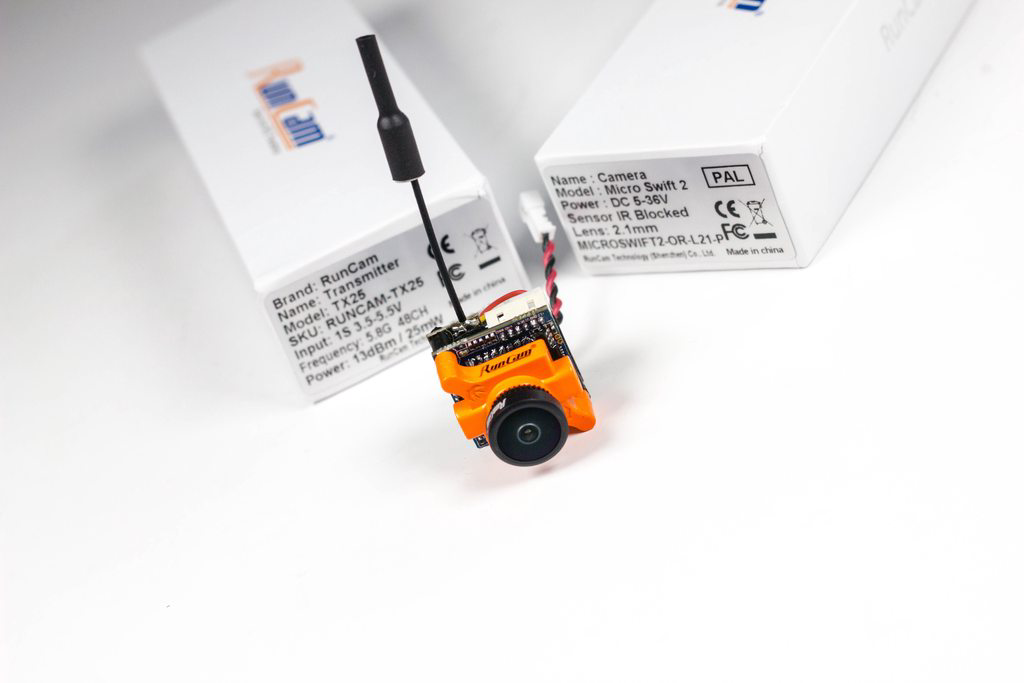

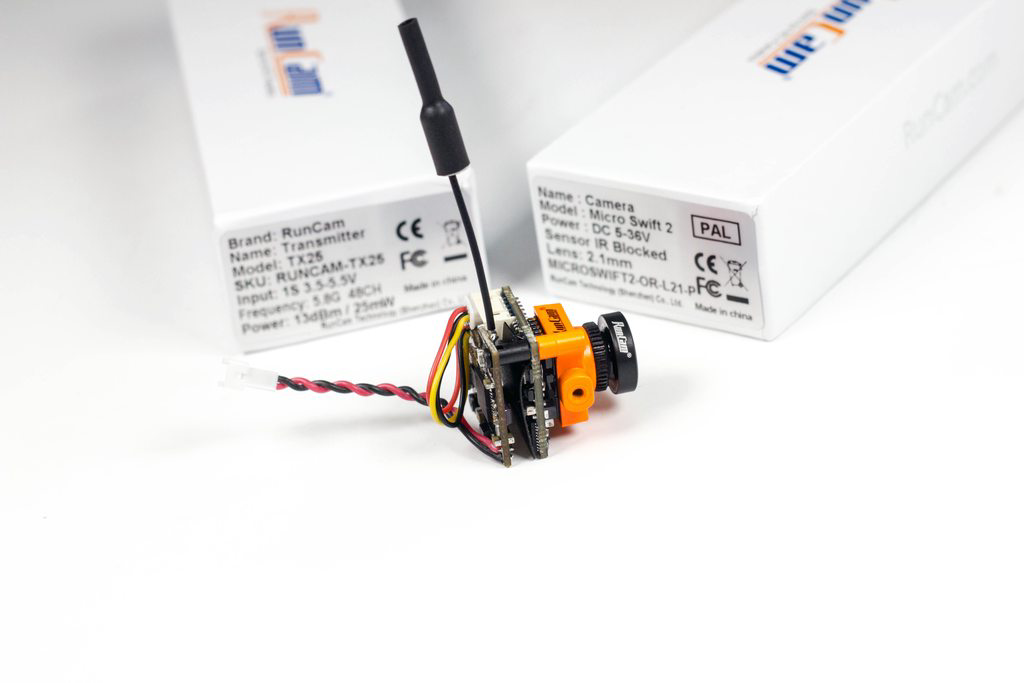
Real World Use
Installation
To test the Micro Swift 2 to it’s full extent, we’re going to be using the latest and greatest components. I’m joking a little here - your quads performance won’t make any difference to how a good CCD benefits you, it just so happens that I have another review inprogress, so it seemed fitting to combine them both together in terms of builds :)
Similarly to the original Micro Swift, you can purchase the camera with either a 2.1mm (160 degrees FoV) or a 2.3mm lens (145 degrees FoV), and my personal preference is definitely 2.3mm as on the normal size Swift 2’s, because there’s less distortion and it matches what I’m used to. I find the 2.1mm to be a little wide, but as that lens is also available on all of the other range of cameras there’s not really much to say here.
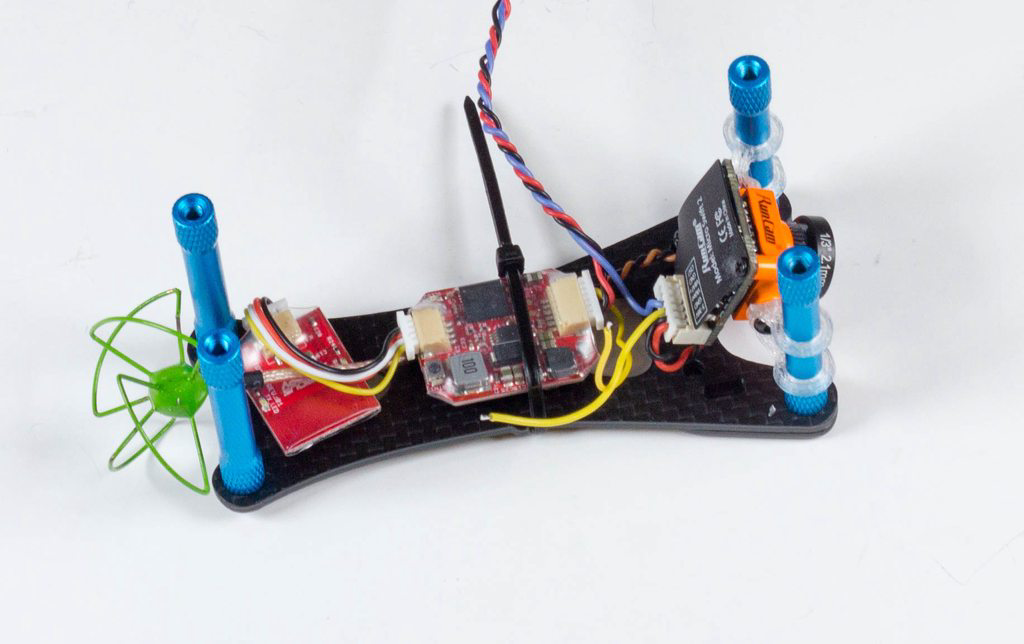
For those in the know, you’ll notice this is a AstroX Switch top plate with standoffs, and it is part of my Switch ExactX review due out in a few weeks time. We’ll be pairing it up with a FuriousFPV Stealth VTX which I’m also testing, and that is all wired into the HobbyWing FC and ESC stack that contains a full ESC. That’s why the video wires are not joined together, as they must both connect to the FC to receive the extra OSD that will be added onto the video feed.
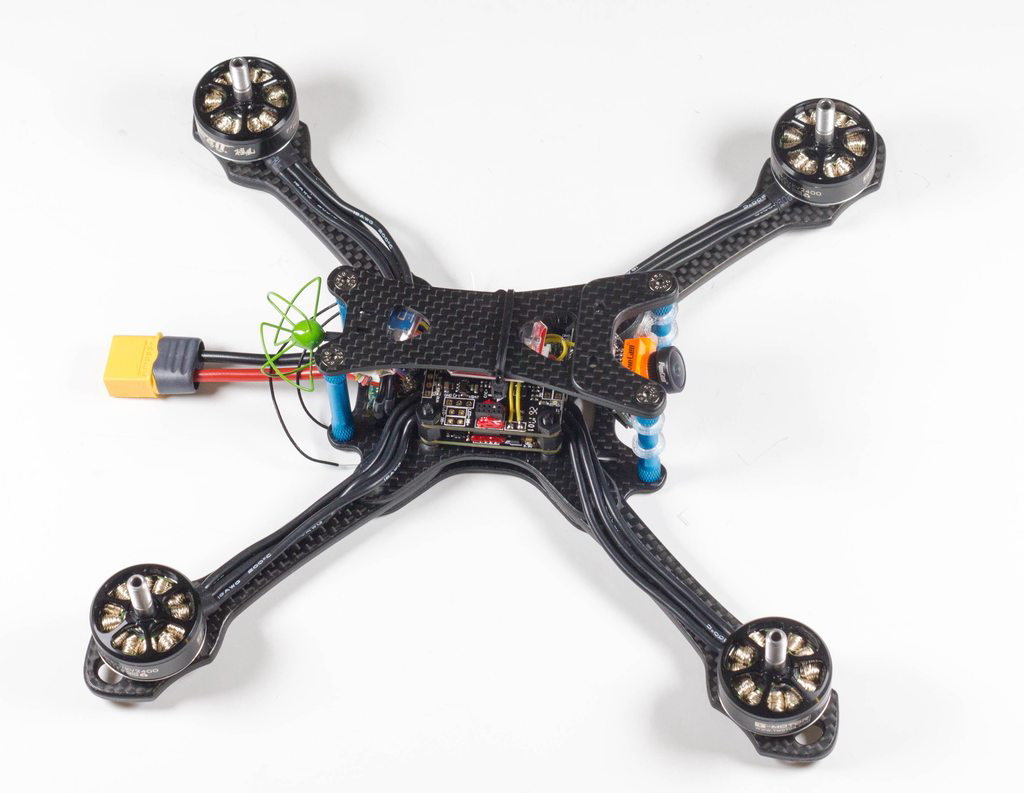
Installation into this frame is very simple, I took the Hyperlite Floss 3d printable camera mounts off of Thingiverse that a user had kindly uploaded which will essentially fit on any frame that has standoffs close enough for it to work. It’s a super light, but also very rigid mounting solution which has proven to not really have any downsides. The camera does move slightly and could potentially sit at an angle if you have loose standoffs, but so far it is fine for me, and I have printed a ton of spares as they print so quickly, so that I can change them in a heartbeat if required.
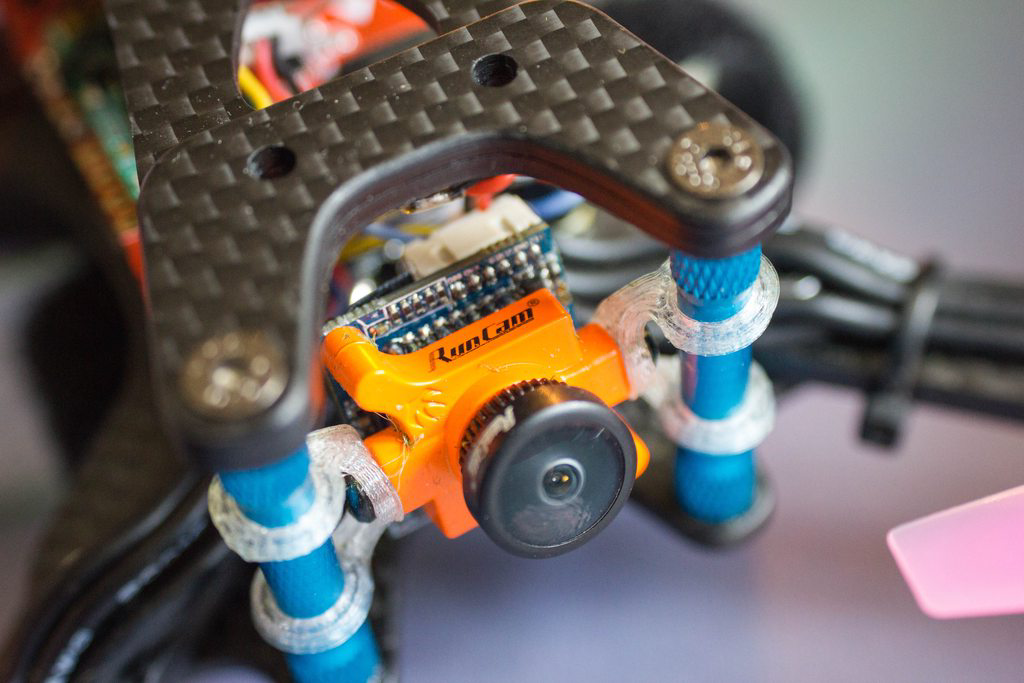
TPU is the perfect material for this as it helps to soft-mount the camera even further to remove some of theose extra vibrations you get. The only downsides I can see to how this is mounted is if the standoffs are not close enough together or are of a different tolerance you maybe able to move the mounting collars slightly, but on this setup it works very well.
Flights
Here we have some of the first flights I had with this camera, also testing the AstroX Switch TrueX frame. More on that in another review a little later on.. :)
And here we have another test flight of the Runcam Micro Swift 2, this time in a lower-light condition flight.
I must admit this is the first place I’ve noticed a difference compared to the normal Swift 2. Both my Micro Swift and Micro Swift 2 handled very similarly as I was flying both rigs, however the Swift 2 (non-micro) definitely performs much better in these sort of dusk conditions. I’ll have to keep testing to monitor how bad this is, but at times it was very difficult to see the gates, and while I know they are black and green, if you see some of my previous videos I have no issue in spotting them in the same lighting conditions.
Conclusion
Overall this is a fantastic little camera that is going to be seen in probably 90% of upcoming builds by frame designers just to squeeze that extra weight out of their frames to meet the demands of racers. Aside from that, it opens up so many possibilities to those who design and fly micro quads, allowing them to fit high quality cameras in without any compromise - this is a HUGE leap forwards for the micro category which I am looking forward to seeing developments in - particularly 2" and 3" size frames.
Pros
- Features matching Swift 2 (minus Microphone)
- Lightweight compared to Swift 2 or even Mini Swift
- Full OSD with voltage
- CCD quality camera over CMOS.
- Cheap compared to competition.
- Mountable VTX (VTX25) for super small builds
- Preset lighting settings including Lightrax!
- Voltage OSD turns purple when low voltage (auto detects cell count)
Cons
- No microphone
- Potentially easier to damage due to no case, but no damage so far with many many crashes
- Slightly worse low-light performance than Swift 2
- Slightly blurrier image than Swift 2
- OSD pilot name character limit is shorter than Swift 2 - I could not fit my name ‘add1ct3dd’, and had to use ‘add1ct’
Overall this is a fantastic camera that is the next evolution in the great CCD camera wars, and really in my opinion does not have any major drawbacks as of yet. As components shrink, so do weights, so hopefully we’ll get to the point of having even longer flight times, as well as crashes doing less damage due to less mass. Having ran this camera, and it’s V1 brother for a month or so now I haven’t damaged anything so far, so reliability is not really a concern for me. Like many other parts, I always carry spares, so it’s not that much of an issue even if it does break, but the current design configuration does not concern me in the slightest when it comes to durability.
I’d love to see a V3 that improves on the image quality even further to get us back to the awesomeness of the Swift 2, but I’m not that unhappy enough that I’d not run the camera, I think it would still be fine for racing, and the advantages of running a smaller and lighter camera far exceed the small issues I’ve seen here.
You can buy the Runcam Micro Swift V2 from Banggood or direct from Runcam, as well as any local retailer that stocks Runcam!